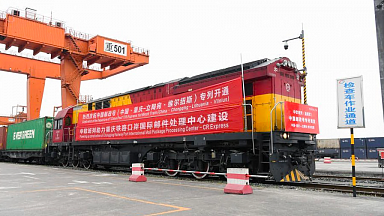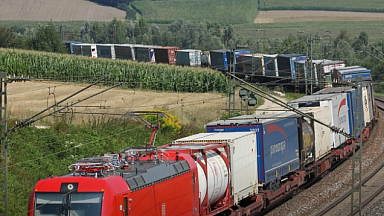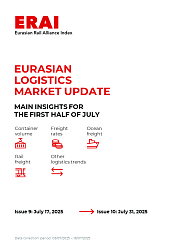When it comes to the global transit system, Central Asia is a region with a substantial transit potential; however, the lack of sea access and issues between countries in the region hinder the effective realisation of these opportunities.
Its geography has made the region a key driver in establishing new transport corridors linking landlocked states with Indian Ocean ports.
The countries in the region are faced with a strategic choice between large infrastructure projects, each with its own advantages and risks.
Iran’s Chabahar Port in the country’s southeast and Pakistan’s Gwadar Port on the Arabian Sea are currently the focal points of the geopolitical rivalry between India and China for regional influence.
Uzbekistan is at the forefront of this transformation, actively promoting the Trans-Afghan Railway as an alternative link to the ports on the Indian Ocean. Tashkent is preparing to launch the construction of the 647 km Trans-Afghan Railway.
This project worth $4.6 bln will secure access to the ports in Pakistan within five years. The project looks particularly ambitious as projections indicate that during the initial stage, the corridor will handle up to 3 mln tonnes of cargo per year, eventually reaching 15−20 mln tonnes by 2035-2040.
In a parallel development, Iran is planning to connect its southeastern Chabahar Port to the national railway network via Zahedan by the end of the current Iranian year (the end of March 2025), according to Iran’s Minister of Roads and Urban Development.
This project will create new opportunities for Central Asian countries while also complicating the choice of the best transport solutions.
The countries in the region recognise that their future economic prosperity largely depends on their ability to integrate effectively with global trade networks.
However, they have to carefully navigate the competing interests of major geopolitical actors, each striving to leverage transport infrastructure to advance its strategic goals, according to analysts.
Multi-vector strategy as a pillar of economic independence
International relations experts stress the importance of a coordinated approach to the development of transport corridors. Analysis suggests that Central Asian states would benefit from accessing the southern ports in both Iran and Pakistan without creating competition among themselves, which would eventually weaken their competitive potential in the Trans-Afghan region.
The China-Pakistan Economic Corridor with Gwadar as its central hub, poses serious competition to alternative routes. It appears that the Central Asian countries’ access to the non-freezing ocean port is controlled by China, creating potential risks of excessive dependence on a single geopolitical actor.
Another emerging option is the Central Corridor. One development path is the Trans-Caspian route, or the Central Corridor, which runs from China to Central Asia, the Caspian region, the South Caucasus and ultimately Europe.
This corridor is capable of boosting trade by 200 percent by 2030, making it an appealing tactic to diversify transit flows.




